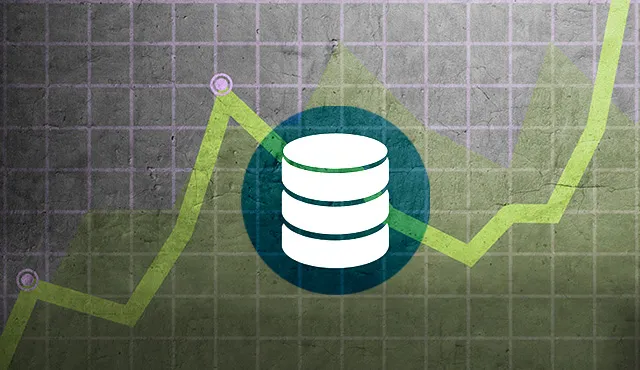Efficient Software Product Engineering Outsourcing

Table of Content
Thousands of companies, whether big or small, have been outsourcing a part of their departments and/or projects for years. Today’s outsourcing industry is expected to grow by 37% annually between 2007 and 2010 because it is much more specialized compared to outsourcing a few years back
One growing specialization under IT outsourcing is product engineering. Many leading IT companies have strategically planned PEO in order to realize significant cost savings. However, most of them have gained quality and reliability as well. On the other hand, some companies have different experiences with outsourcing product engineering.
Sprint spent $400 Million and moved 1,000 of its employees to IBM to outsource its internal software development, and claims that rather than saving them money it cost them extra. In addition, they did not see the productivity enhancements that they were promised. When product engineering is on the line, will “saving money” still be the key motivator for a company to outsource projects?
In outsourcing product engineering, looking at just cost savings can only yield short-term improvements. Unfortunately, many businesses fail to realize other benefits that PEO can offer to both the buyer and vendor of such services.
“In longer term, process improvements often make great impacts on both cost savings and the quality of IT services delivered” (MetaGroup 2007).When a company looks beyond cost savings and starts to go after value, outsourcing product development becomes a practical choice for both parties. Buyers can see this change as a way to compete better in today’s fast-paced market, while vendors can expand their portfolios and receive good recognition for future clients.
“In reality, most IT organizations save 15%-25% during the first year; by the third year, cost savings often reach 35%-40% as companies ‘go up the learning curve’ for offshore outsourcing and modify operations to align to an offshore model” (MetaGroup 2007).
Learning how both buyers and vendors can benefit from outsourcing product engineering without focusing on saving money can truly reduce disappointments of not arriving at the promised cost savings that were originally expected. The more buyer and vendor work together to produce better results, the more savings they can achieve consequentially.
PEO: BENEFITS FOR BUYERS
“Instead of complying with mandates or regulation, leading companies are looking at outsourcing ‘beyond cost reduction’ to unlock the hidden value in the business processes inside their organization,” said Christopher Carrington, President of Capgemini’s Outsourcing Services in North America. “Given the pressures facing companies, they must take a more holistic and long-term outsourcing approach to realize the significant performance and financial gains outsourcing can provide for their business.” The only way to do this is to use outsourcing to their benefit and in turn, increase revenues.
One of the main advantages of outsourcing product engineering is that companies can now free old and existing applications from different departments and improve company files, servers and other office data. Vendors can help companies in reducing backlog applications and other functions that the companies were not able to fulfill for years. As a result, these companies or buyers can move a step forward and achieve other more important goals.
Existing companies usually have problems with documentation, business processes and other software development efforts within the department. With PEO, vendors are required to document each process they perform for legal purposes. In addition, outsourcing product engineering allows these companies to learn from past mistakes regarding project management, business processes or other IT related issues and wipe out these mistakes by coming up with new business approaches that will lead the company to the future.
The good thing about outsourcing product engineering is that the company can now introduce metrics and measurement, which are usually forgotten when projects are done in-house. However, outsourcing product development requires that buyers provide vendors with a solid contract to assure that both parties understood termination clauses, performance standards, output quality and other mutually acceptable terms and conditions within the contract.
Of course, when you outsource product engineering to vendors that has been working on similar projects for years, buyers will receive new perspective on business approaches and state-of-the-art technology. As a result, buyers can take advantage of new systems, software development methods and other platforms that the vendors has used and tested, integrate these new approaches to the company’s system and see a significant change in business processes.
PEO: BENEFITS FOR VENDORS
In the IT Spending, Staffing, and Technology Trends study conducted by Computer Economics, “Product development outsourcing is the most popular category in IT outsourcing, followed by e-commerce websites, hosted applications and disaster recovery services. These categories are outsourced-either in whole or in part-by over half of the organizations in the study.” Meaning, since product development outsourcing has increased from 35% to 61% in a year, the demand for vendors to fulfill these projects will increase as well.
The main advantage of vendors that do not compete on prices is that they focus on building their expertise in product engineering. As such, vendors will be able to cater to different types of buyers and build a large portfolio with credible reputation, instead of becoming popular as a cost-saving vendor alone.
In product engineering outsourcing, buyers are after business process innovations than cost savings. Since the technology behind product development upgrade to a faster pace due to new systems, languages, hardware, software and other technologies every year, vendors can show off their expertise by competitively demonstrating updated processes in developing projects. This way, vendors can prove to their clients that not only can they save money with cheaper labor; they can also receive better results.
With globalization, each country has a chance of stepping up and proving their talents in product engineering. When vendors promote low prices, remember that another country can provide the same services for lower prices and better quality. When vendors look beyond cost savings and demonstrate cutting edge services, they can gain an edge when it comes to pricing and become top of the list when buyers choose vendors for larger projects in the future.
PEO BENEFITS: THE REAL DEAL
In a study of global sourcing habits and experiences initiated by Ziff Davis Media on behalf of Lionbridge Technologies, Inc., the survey concludes, “Majority of responding organizations make it clear that the key driver behind outsourcing is to save money. However, a common flaw in global outsourcing programs is excessive focus on costs is commonly undermining global outsourcing relationships and wasting important opportunities for companies to improve quality of service, increase productivity and shorten time to market.”
In any type of business, cost savings is unquestionably one of the most important factors in deciding whether to outsource product engineering or not to. However, in order to prolong the buyer-vendor relationship, both parties should look at the long-term results by looking at the bigger picture and ensuring that the real benefits of PEO are achieved.
“Companies can still achieve cost savings of 25 to 30 percent if they outsource successfully” (Gartner 2007). The start of a successful outsourcing lies in choosing the partner or vendor that will perform based on buyer’s company standards. Companies that have successful partnerships with vendors are aware of the benefits of PEO. Both parties should understand the importance of quality, efficiency, innovation and consistent customer service. When both the buyer and vendor use these factors in every business process, new products, upgraded services and other improvements, the end-product will, without a doubt, increase revenues.
“Most projects change by 10%-15% during the development cycle” (MetaGroup 2007). Many companies that have experience in outsourcing product engineering will share you different stories on how they added various expenses, such as travel, delays, management, coordination and many more, resulting at a much smaller cost savings than expected. However, when companies are aware of the other benefits of PEO and how these could help increase revenues, they can look beyond cost savings and appreciate the bigger picture. Although companies may only save a small percent of their business processes, they gain quality, efficiency, innovation and consistent customer service by outsourcing product engineering.
Regardless if you are a buyer or a vendor, taking advantage of Product Engineering Outsourcing and putting its benefits to use can extend well beyond the obvious - cost savings. Focus on the real deal of Product Engineering Outsourcing and think of saving costs as a bonus… your company will never regret it.





